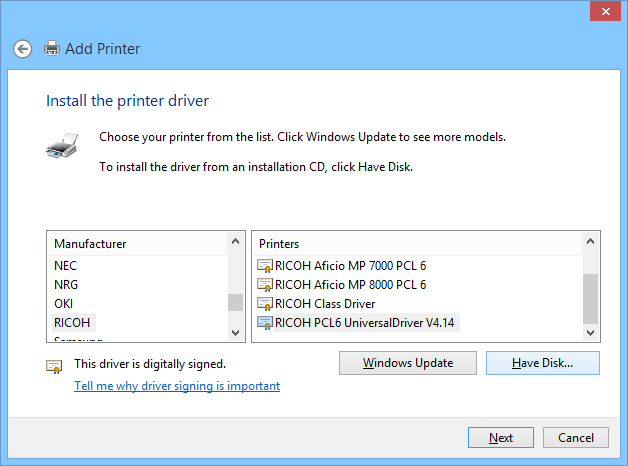Ghostscript Pdf Printer Driver
An interpreter for the PostScript language and for PDF. Releases and Release History. The leading edge of Ghostscript development is under the GNU Affero GPL license. The current Ghostscript release 9.27 can be downloaded here. Current releases can be found here.
I would like to make my own 'PDF printer' using Ghostscript.
Each time you print to the Ghostscript PDF Printer, it creates a new PDF file in the designated target folder. Other PDF drivers pop a dialog asking you to name the PDF file, but Ghostscript PDF constructs the target filename for itself automatically. PDF Printer - Distributing Ghostscript - bioPDF. Click Setup and then click Install to extract the Ghostscript files to your computer. Close the folder window that opens at the end of installation. Install the Ghostscript Printer 1. Click the Start button, then Settings, and then Devices. Click Add a Printer or Scanner, and then click The printer that I. GhostScript is an interpreter for a language called PostScript which is a common format for larger laser printers. We will use a PostScript driver to create an interim file format then call GhostScript to create the PDF files. To call GhostScript we will use the Run Program action which requires Print Distributor version 3.1 or later. Each time you print to the Ghostscript PDF Printer, it creates a new PDF file in the designated target folder. Other PDF drivers pop a dialog asking you to name the PDF file, but Ghostscript PDF constructs the target filename for itself automatically. Aug 26, 2015. “Kool” Tip. GhostScript on Windows 10 PDF Generation for PowerBuilder Classic. Most PowerBuilder developers know that the DataWindow object class in PowerBuilder (PB) Classic utilizes the open source (GNU) version of the GhostScript (GS) software to convert PostScript printer output into an Adobe PDF (Portable Data Format) file. Locate folder where you have the printer driver setup program. Create a folder named GS next to the setup program. Locate a normal installation of Ghostscript installed by the Ghostscript setup program. Copy the contents of the FONTS, BIN and LIB folders to the created GS folder. Do not copy the folders, only the files in the folders.
Most of solutions I find on the internet involve a 3rd party like Redmon to redirect the PS printer to the Gs executable.
Is there a way to do the same without a 3rd party (other than Gs) ?
Bizagi process modeler free download. Bizagi Modeler is one of the most popular BPM tools. This free process mapping software is used by over 1 million people to model business processes and BPMN workflows. Free download.
Here is my 2 ideas:
Bypass the printing driver and generate Postscript directly by software (From GDI to postscript, using maybe a custom device context like the Metafile device context exist)
Create programmatically a new local port for each document to convert. Maybe using this technique : https://stackoverflow.com/a/1331777/99276
The first solution would be great, but can't find anything about it.

And I am efraid the second is not efficient at all (and detect when the document is fully printed can be tricky)
MiniScalopeMiniScalope1 Answer
Firstly; note that the Windows printing system has been redesigned in Windows Vista and beyond. While the old system still works in WIndows 7 and 8, I am unsure of exactly how usable it is in Windows 10. In Windows 10 everything goes via XPS, and I think (could be wrong) that PostScript is generated by going via XPS first.
Supports all Windows from NT3.5 to Win8.1, also 64 bit and also the Server versions (like 2003, 2008, 2012). It works offline, that is, you have to shutdown your computer and boot off a CD or USB disk to do the password reset. Will detect and offer to unlock locked or disabled out user accounts! Nt offline windows 10.
Your first idea doesn't sound plausible to me. How can you have a printer (and allow your application to print to it) if you don't have a printer driver ? Even if you could do so, why would you create PostScript from GDI just to send it to Ghostscript and have it create PDF ? It would be far more reasonable to create PDF directly.
In the second case I don't see how adding a new local port would help you at all. Ports are simply where the output of the printer driver is directed. What a Port Monitor (RedMon is a Port Monitor) does is redirect the data stream sent to the port, and 'do something' with it. In the case of Ghostscript + RedMon the 'something' is create a PDF file.
Ghostscript Print Pdf
I'm unclear why you don't want to use RedMon, given that you are apparently happy with using Ghostscript. However, if you really don't want to do that then write your own Port Monitor. The process is documented in the Windows Device Driver Development Kit and isn't especially hard. If you get stuck you can even look at the RedMon code as a guide. For example, see here
KenSKenS